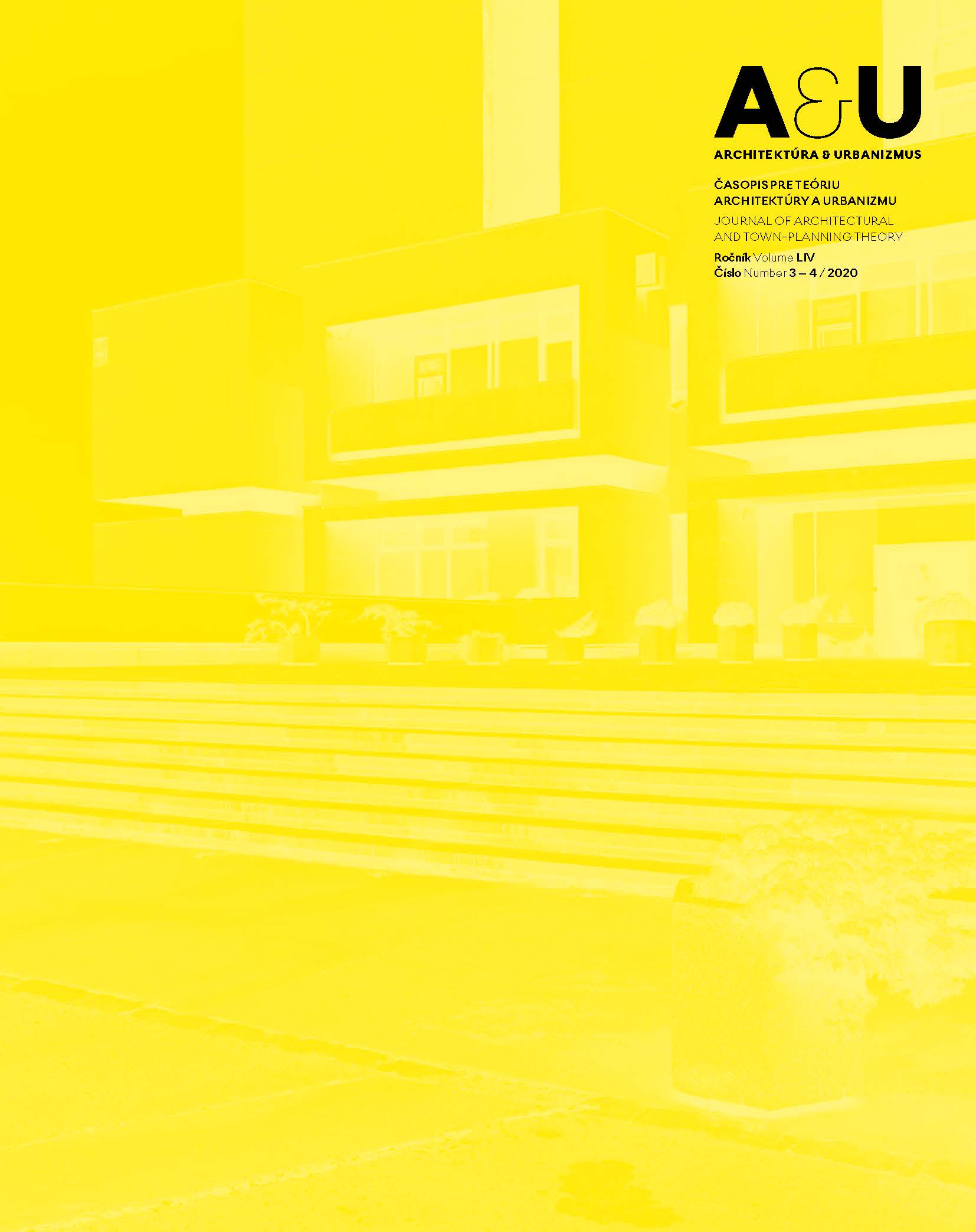Moi et LeC: Dýchající stěny v architektonické performanci metabolismu měst
Moi et LeC: Breathing Walls in the Architectural Performance of a City’s Metabolism
Author(s): Marie DavidováSubject(s): Fine Arts / Performing Arts, Architecture, Rural and urban sociology
Published by: Historický ústav SAV, v. v. i.
Summary/Abstract: The article presents a discussion on cities’ metabolisms and bioregions (Thackara, J. 2019), specifically their habitable and edible landscapes for cross-species co-living. Various forms of flourishing cohabitation with other species have made their appearance across the continents in indigenous and vernacular cultures. This paper poses the question with respect to the relatively simple and small-scale architectural elements of breathing walls, envelopes, and screens. Nonetheless, it appears that such elements as breathing walls, envelopes and screens are hyperobjective and multiscalar, playing a critical role in urban metabolisms, their ecosystems, edible and habitable landscapes for multiple species, including humans. The article connects historical examples with my recent research by design on architectural applications of such elements, discussing the schools of thought present in different vernacular cultures. It shows that cross-species symbiosis was common in indigenous urban habitats and that we need to learn from such intellectual traditions if we are not to face full biodiversity loss. Therefore, I plan to introduce the design and design process of the 'Ray' wooden (Davidová, M. 2014, 2016, 2017). The Ray designs and prototypes endeavour to synergise the qualities learned from the thinking of the presented vernacular examples for adaptation to recent climate change and support of biodiversity needs in the built environment. The discussion on ‘breathing walls’ starts with the theoretical work of David Leatherbarrow in the context of a shift in the understanding of the architectural profession brought about by his exceptional publication, the ‘Architecture Oriented Otherwise’ (Leatherbarrow, D., 2009). This theme has recently become urgent, though it does not yet fit well into current economic models, nor the structure of building laws and regulations. The reason is that current building law, the building industry and the building market are anthropocentric and aimed toward fast direct profit. However, this article shows that considering the overall ecosystem in the urban metabolism is the most beneficial solution for all, including humans, their habitats, and economies. Around the start of this millennium, a serious discussion began to grow on architecture’s interaction with its environment. This interaction also implies its penetrability and biotic and abiotic agency through its boundaries. In this period, the authors such as Addington, Leatherbarrow, Hensel and others (Leatherbarrow, D., 2009; Hensel, M., 2013) mainly sought their references in modernism, referring to architects such as Le Corbusier, Costa and the like. This situation, though, might be the outcome of the general acceptance of this style within the conservative context of the architectural profession (Davidová, M., 2019). As a result, the present article demonstrates that the invoked modernist authorities were themselves learning from the schools of thought of vernacular cultures present across the globe. The modernists under discussion most likely explored the emergent theme thanks to the changing political situation in countries of extreme climates (not all of which are covered in the article). Due to the obvious entrance into a different climatic, eco-systemic, cultural, and political situation, it was not possible to neglect the traditional influences of such countries. Such local specificity is necessary today as well. Direct references of breathing walls and screens are essential and clear in Oriental, often Arabic, architecture. As shown in this study, this feature had a critical influence on Portuguese and Spanish architecture, which in turn had a critical influence on Latin America (Davidová, M., 2019). However, similar principles are applied with reference to extreme cold and snowstorms in Norway. This paper shows, how such ‘schools of thought’ can be transferred to and investigated in the context of the Central European location, since in recent times it has been experiencing climate extremes even in originally mild regions. These effects include extreme droughts, extreme rains followed by floods, waves of extreme heat and cold, etc. Therefore, it is increasingly difficult to apply purely local intellectual traditions developed over centuries in the mild regions, as their climate has changed rapidly. However, this article is not planning to discuss the originality of the concept but instead its relevance, evolution and the possibilities of adaptation to today’s Czech built environment. It will compare my design research with the above historical context to address the current critical increase of climate extremes in Czechia. The paper will introduce the aim of biodiversity support and climate change adaptation through architecture, urban design and architectural and urban design parasites. It aims to assist in a transition from what architecture used to be understood towards the new field of ‘Systemic Approach to Architectural Performance’, as presented in the author’s PhD dissertation (Davidová, M., 2017, 2018). This field aims toward a planetary transition towards the Post-Anthropocene that would lead to Planetary Health. This paper was developed as a contribution to the lecture series ‘Moi et LeC‘, organised by Petr Šmídek at FA VUT in Brno in 2018.
Journal: Architektúra & Urbanizmus
- Issue Year: 54/2020
- Issue No: 3-4
- Page Range: 261-268
- Page Count: 8
- Language: Czech

